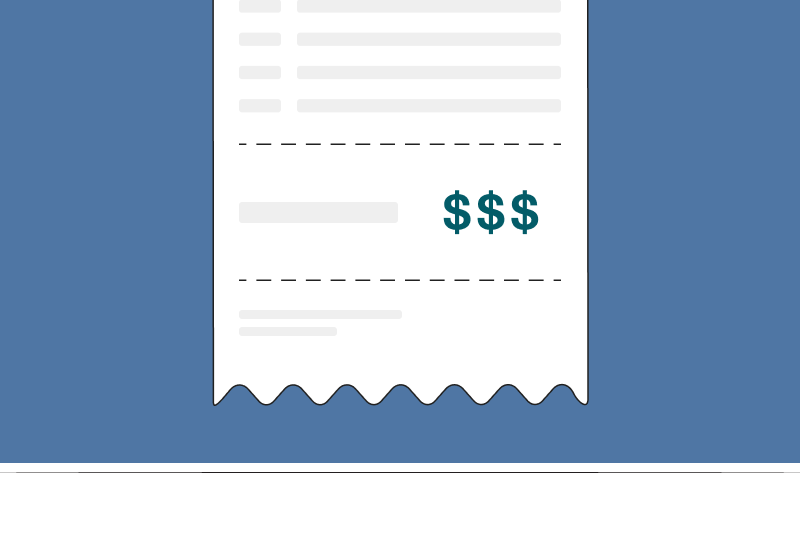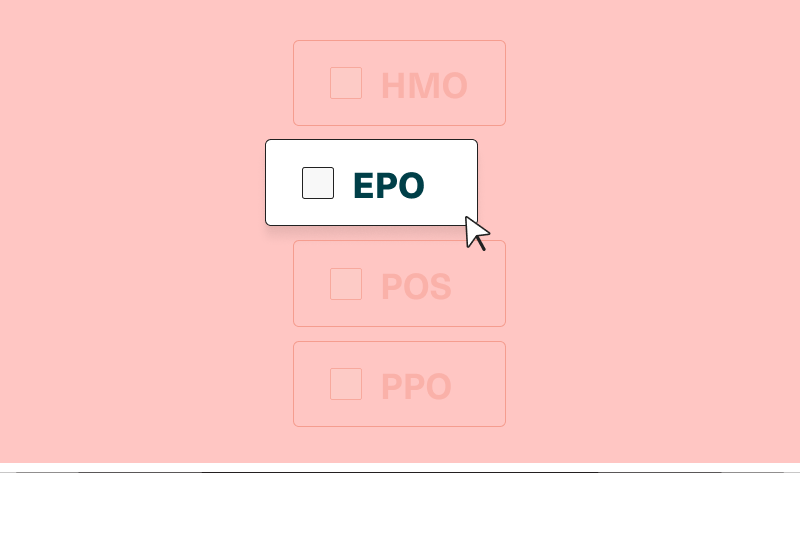Health Insurance 101: Balance Billing

People who need emergency care or specialized treatment don’t always have the luxury of seeing in-network providers. But these visits can lead to significant expenses if an out-of-network provider asks a patient to pay the difference between the cost of the treatment and the amount their insurance pays — a controversial practice known as balance billing.
Keep reading to discover everything business leaders need to know about balance billing, relevant laws, and the role of insurance in balance billing disputes.
What is balance billing?
Balance billing occurs when an out-of-network provider receives less than the charged amount from an insurance company and charges the patient for the remaining cost.
Say an ophthalmologist charges $3,000 to perform cataract surgery. The patient’s insurance doesn’t have a contract with the provider, so insurance pays $800 (120% of the Medicare rate) for the procedure. Several months later, the patient opens their mailbox to find an unexpected bill for the remaining $2,200.
People frequently don’t realize that a provider or service is outside their network, so surprise bills aren’t uncommon. For instance, several residents in Colorado were outraged when they received expensive balance bills for short ambulance rides not covered by their insurance.
A business’s covered employees may assume that their employer-sponsored health insurance fully covers their treatment and may feel shocked and upset when they get an unanticipated bill for hundreds or thousands of dollars. As a result, many people refer to balance billing as “surprise billing.”
It’s important to note that balance billing differs from other insurance-related charges employees may receive from their provider. Here’s a quick breakdown of standard health insurance terms that members often encounter.
Co-payment
Insurance companies typically require members to pay a fixed co-payment (co-pay) to cover a portion of each service. For instance, they may need to pay $15 every time they refill their blood pressure medication or have a dental cleaning. Co-pays never change during the annual duration of the plan, no matter how many times a patient receives a particular service.
All insurance companies state their co-payment fees up front, so these expenses aren’t unexpected or variable like a balance bill.
Deductible
A deductible is a set amount members pay for medical services each year before the insurance company picks up the tab. For example, people with a $1,500 deductible must pay the first $1,500 in qualifying healthcare expenses before their insurance company starts paying for covered services.
Out-of-network services charged through balance billing may not count as part of the member’s deductible. In other words, they could pay a $2,000 balance bill and still have to pay their entire deductible before triggering the insurer’s responsibility to pay claims.
Coinsurance
Coinsurance is the amount the insured must pay for covered services after they meet their deductible. For instance, the insurance company may pay 80% of covered expenses and require the member to pay 20%. Together, these payments cover the total cost of the bill.
Coinsurance payments can vary drastically based on the cost of the services. However, members never have to pay more than the set percentage. By contrast, balanced billing charges patients for any amount not covered by insurance, which could be a significant percentage of the bill.
Why does balance billing happen?
Balance billing occurs when a patient receives medical services from providers or organizations that don’t belong to their insurance company’s network. Providers want to get paid for the entire bill, so they target patients to make up the difference.
Here are a few common scenarios that may result in a balance bill:
- A person gets in a car accident and is transported to a nearby out-of-network hospital
- An out-of-network resident assists an in-network cardiologist during a heart surgery
- A member schedules an appointment at their usual in-network primary care clinic but receives treatment from a substitute out-of-network doctor
Additionally, balance billing can occur if a patient’s insurance company uses reference-based pricing (RBP). Under this model, insurers set benchmarks to determine how much they’ll pay providers for services. For instance, an insurance company may compensate doctors based on Medicare reimbursement rates or bundled payment rates. RBP can decrease healthcare costs and lead to greater transparency in medical billing. However, balance billing can occur under the RBP model because out-of-network providers haven’t agreed to the insurance company’s established rates.
Balance billing vs. out-of-network charges
Understanding the differences between balancing billing, in-network charges, and out-of-network charges can help employees avoid costly surprises.
| In-network charges | Out-of-network charges | Balance billing | |
| Provider relationship with the insurance company | The provider or facility has a contract with the insurance company. | The provider or facility doesn’t have an agreement with the insurance company. | The provider or facility typically doesn’t have an agreement with the insurance company. However, in some cases, an in-network provider may disagree with the rate and send the patient a balance bill. |
| Cost of treatment | Costs are negotiated by the insurance company and provider. | Costs have not been agreed upon prior to service. | Costs have not been agreed upon. |
| Division of payment between insurance company and patient | The insurance company covers all or part of the bill for eligible services, except for member expenses like co-pays, coinsurance, and deductibles. | The insurance company pays a portion of the bill for qualifying services, but members typically must pay higher co-pays and coinsurance. | The patient pays all costs not covered by the insurance company. |
Balance billing laws
The federal government and some states have recently passed balance billing laws to regulate this practice.
No Surprises Act
On January 1, 2022, the federal government implemented the No Surprises Act to protect consumers from unanticipated medical expenses. This law makes it illegal for hospitals and providers to send patients balance bills for emergency care. Additionally, in-network hospitals can’t charge covered employees more money if they receive care from out-of-network providers.
The No Surprises Act applies to air ambulance services, emergency rooms, hospitals and other healthcare facilities, and physicians. However, the No Surprises Act doesn’t cover ground ambulances, so these services can still send patients balance bills.
Also, patients can still receive surprise bills if they willingly choose an out-of-network provider during a nonemergency situation. For example, a person who makes an appointment with an out-of-network dermatologist for a routine skincare check may get a balance bill.
Balance billings laws by state
Additionally, many — but not all — states regulate balance billing to varying extents. Business leaders who want to help protect their employees from this practice should research balance billing laws before selecting a health insurance plan.
- Arizona
- California
- Colorado
- Connecticut
- Florida
- Georgia
- Illinois
- Indiana
- Iowa
- Maine
- Maryland
- Massachusetts
- Michigan
- Minnesota
- Mississippi
- Missouri
- Nebraska
- Nevada
- New Hampshire
- New Mexico
- New York
- North Carolina
- Ohio
- Oregon
- Pennsylvania
- Texas
- Vermont
- Virginia
- Washington
- West Virginia
- Alabama
- Arkansas
- Idaho
- Kansas
- Kentucky
- Louisiana
- Montana
- North Dakota
- Oklahoma
- South Carolina
- South Dakota
- Tennessee
- Utah
- Wisconsin
- Wyoming
Medicare balance billing
The government prohibits balance billing by providers who have signed up to care for Medicare and Medicaid patients. These physicians and hospitals have agreed to accept the standard reimbursement rates established by Medicare and Medicaid. As a result, providers can’t ask patients for additional payment beyond their co-pay or coinsurance.
These restrictions apply in all states.
Balance billing and insurance
Some insurance companies can be helpful allies for patients who want to learn how to fight balance billing.
People who receive a surprise bill should contact their insurance companies to see if they offer assistance. Insurers can sometimes persuade providers to match their in-network rates, significantly reducing the bill. And in exceptional circumstances, insurance companies may allow members to file an appeal to get the charges covered in-network.
In many cases, though, insurance companies don’t step in to assist with balance billing, leaving members to resolve the matter on their own — often at a high cost.
Sana’s approach to balance billing
Sana uses reference-based pricing to offer providers fair, data-driven reimbursement rates for healthcare services. In over 98% of cases, providers accept Sana’s rates without balance billing patients.
In rare situations where covered employees receive surprise bills, Sana provides comprehensive support. Members should send their invoices to Sana so the company can work directly with the providers to find an agreeable solution. Currently, Sana has a 100% success rate at handling balance bills, and members have yet to pay more than their out-of-pocket limit.
Balance billing FAQs
In some cases, balance billing is legal. For example, patients who knowingly choose an out-of-network provider for preventative care may be subject to balance billing. However, state laws, the type of treatment, and other factors can affect the legality of balance billing.
It often takes several months to resolve a balance bill, especially if the patient disputes the charges or asks their insurance company to take action on their behalf. In exceptional circumstances, a balance bill may take up to a year to settle.
There’s no surefire way to prevent balance billing. However, employers can utilize health plans like Sana’s that include services to manage balance billing disputes for your members.






